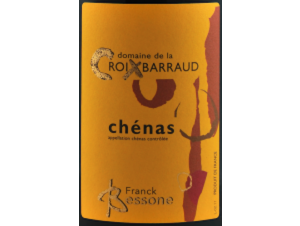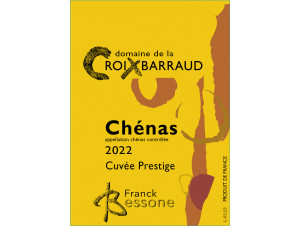You have no items in your shopping cart.
Wine Chénas
The AOC Chénas is the smallest appellation of the Beaujolais crus, with only 265 hectares. Its production consists exclusively of a red wine with a beautiful intense colour and blue tints. Read more on Chénas
-
Top Selling
-
Top Selling
-
Top Selling-21%
- -17%
Appellation Chénas
AOC Chénas, Gamay as the only grape variety
Chénas is a dry red wine from the Beaujolais region, produced in the Crus du Beaujolais wine region. Only two communes produce this wine, La Chapelle-de-Guinchay and Chénas, but they extend over two departments, Saône et Loire (71) for the former and Rhône (69) for the latter.
The Chénas production area evokes a "place planted with oak trees". It dominates from east to west the Moulin à Vent area which faces the Mauvaise valley, a tributary of the Saône. The production is meagre, due to the nature of the terrain, but it is reputed to be of high quality. The soil is sandy and poor, sometimes clay or sandy-clay, covering granite slopes. The semi-continental climate is mild and temperate. It benefits from oceanic and Mediterranean influences.
The only main grape variety that makes up Chénas is the black gamay with white juice, which appreciates the harshness of the soil and the mildness of the climate. It is sometimes supplemented by other grape varieties, but these must remain complementary and accessory, never exceeding 15%. These are Aligoté, Chardonnay and Melon.
The yield is legally limited to 58 hectolitres per hectare, but in reality it is much lower, around 35 or 40 hectolitres per hectare. Harvesting is done by hand to preserve the integrity of the grapes until they are poured into the vats.
The winegrowers who produce Chénas have made it a habit to let it macerate for a long time compared to the other productions of the region. For ten to twelve days, the wine is matured, sometimes in oak barrels, to produce a warm and fleshy wine, suitable for ageing.
Chénas as a wine to keep
You can keep your Chénas for 8 to 12 years, ideally in a cellar with a constant temperature of 12 to 14°C and a humidity level of between 70% and 75%. Always leave the bottles lying down, free of their cardboard or wooden packaging. Chénas is praised for its quality, especially by Burgundy lovers. Indeed, as it ages, its aromas and texture become closer to its Burgundian cousin.
When you feel it is ready to be served at the table, let it slowly reach a temperature of 14-16°C. You can let it air out in a carafe beforehand, but this is not a requirement.
How to recognize AOC Chénas
The colour of AOC Chénas wines is a deep red, due to the fact that the Gamay Noir grapes are often left in vats for more than ten days. The purplish red colour is typical of the great Beaujolais wines. With ageing, the colour turns to deep garnet. The nose of Chénas smells of peony and rose when it is young. As time goes by, the floral and fruity aromas diversify and spicy and vanilla scents emerge, inherited from the oak barrels.
The attack in the mouth is clear. The tannins delicately underline the fruity and fleshy aspect of Chénas, with an underlying acidity. It is only with ageing that the connection with Burgundy wine is evoked. Chénas is a wine for ageing which takes its full strength between eight and twelve years.
Chénas is an earthy wine which likes the solid dishes of Beaujolais. It goes well with salted lentils, poultry or hot sausage. Whatever cheese you choose, it will always go well with your Chénas.
Beaujolais et Lyonnais appellations

















 TWIL - Achat de Vin
TWIL - Achat de Vin


